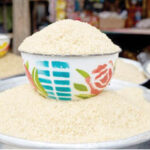In a bid to answer the critical questions of productivity and sustainability plaguing agriculture in Nigeria, I have observed various approaches and models of innovation deployed by many local and international players. The most fascinating and result-oriented ones in my opinion are always market-driven. Here, I attempt to open publicly one of our own models of agricultural innovations that answers to issues like low yield and poor quality of various agricultural products due largely to poor access to quality agricultural inputs and scientific education on the part of the farmers. This is because inadequate agricultural infrastructure and ineffective extension services also contribute to the state of affairs of Nigerian agriculture.
Secondly, the model aspires to solve the issue of the absence of secure local and foreign markets, market-oriented production and developed local market for agricultural outputs. As well as formal markets, the system involves financial institutions in order to mitigate the low capacity to procure modern input, technology and other services on the part of the farmer.
- We can’t return to era of godfathers, Kwara lawmakers tackle Lai
- Entrepreneurship Development: Testing the feasibility of a business idea (II)
Lastly, the continual degradation of farmlands, wrong or inadequate application of fertiliser and other chemicals, bush burning, soil erosion, pollution and negative human and natural activities on the environment are contributors to ecological damage of agriculture and the model is based on producing with least damage to the environment in order to curb this as well.
In this digital agriculture model, the farmers access the service at no cost, while all other stakeholders pay a periodic subscription fee.
- Market: The market is at the centre of activity and meeting point between all stakeholders in the system. It is where a farmer advertises his produce; and a buyer goes to look for it. It is the place where farm input providers, financial institutions and agencies advertise products and services as well as transact businesses. From commodity prices to historical market information and market trends, this feature ensures that platform’s users reap the benefit of an efficient virtual market.
- Farmer: The farmer is perhaps the most important key-actor around whom everything revolves. From his or her simple low-end phone, the platform enables them to post their produce on the market, request for information from extension workers, ask for services from farm and/or financial institutions, input providers, etc as well as receive any data pushed by the other operating entities of the system, like the agencies or government bodies.
- Buyers, aggregators and processors: Through a web and mobile app interface for buyers to access the market where they can find products they are looking for, they can purchase what they see available at the market, but they can also put in requests for certain produce based on any quantity and/or qualities desired.
- Extension: Here, agricultural extension providers provide information about soil, seeds, weather and best farming practices, among others using the platform. Extension officers are provided with mobile and web apps that enable them to enter such pieces of valuable information that will in turn be pushed to the farmers on their low-end phones. The apps will also notify extension workers when farmers make requests for any information so that they can be responded to accordingly.
- Farm inputs: Farm inputs providers are also adequately catered for on the platform. They provide farming support products to the farmers such as improved seeds, chemicals and fertilizers as well as farm equipment. Verdant provides them with mobile apps and web applications to advertise their services on the market and to respond to the requests of any farmer who wishes to patronise their services.
- Financial institutions: Will offer farmers and even farm input providers access to financing information by providing web and mobile application that enables financial institutions to showcase available agricultural credit packages and other services all of which will be relayed to the farmers.
- Agencies: Government, NGOs, donor organisations and media agencies (especially radio service providers) can find relevant research data regarding their respective target groups in the agricultural spectrum that platform covers. The platform caters for these agencies, including Business Development Committees and BMOs by providing a web application interface through which they can be given access to a variety of datasets, and the capacity to reach to farmers with any relevant information or data request.
The model gives each key actor access to the information they need, and also establishes connectivity to other key actors they need to deal with. For example, the platform provides the famer with weather information and a seed guide, but it also connects him/her through the market to farm input providers to purchase the seeds. By integrating the agricultural value chain, this model enables farmers not only to be more visible to the other stakeholders of the agricultural value chain but also to new information. I believe models like this will end the isolation of smallholder farmers, increase their productivity and improve the sustainability of their agriculture.

 Join Daily Trust WhatsApp Community For Quick Access To News and Happenings Around You.
Join Daily Trust WhatsApp Community For Quick Access To News and Happenings Around You.


